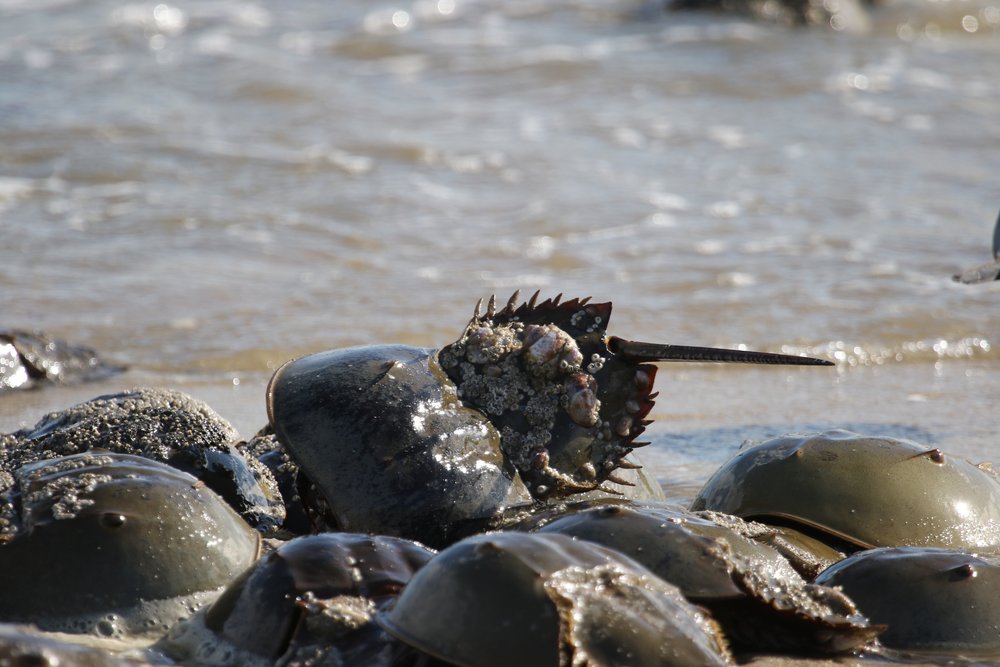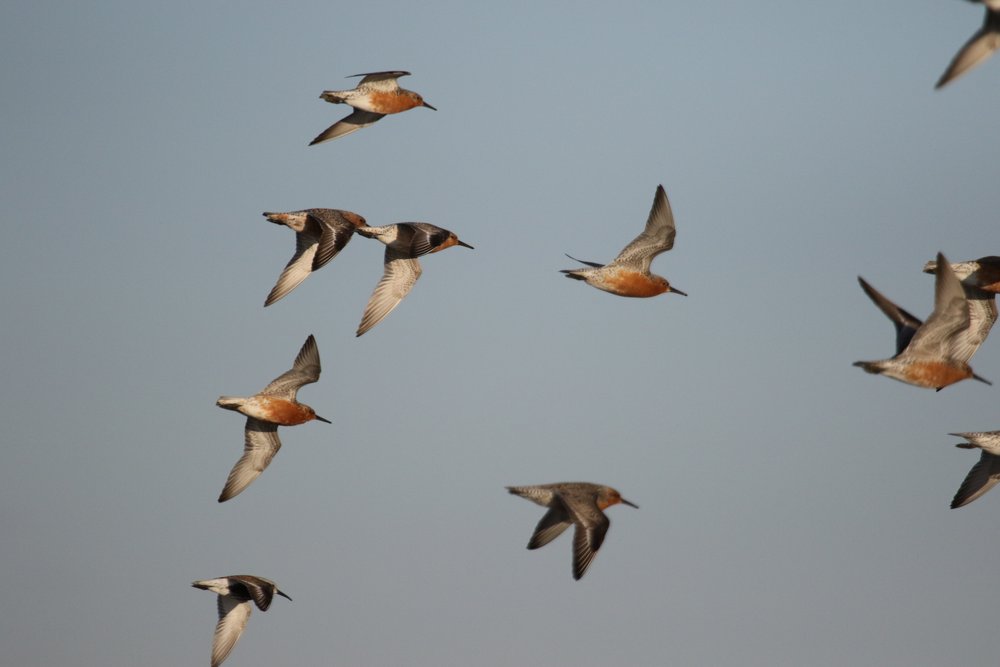
I wasn’t ready for the mass of screaming gulls, or for the piles of Horseshoe Crabs along the shoreline, the males riding tight to the females, tails spiked toward the overcast sky. With each wave another batch of horseshoe crabs washed up on Reed's Beach near Cape May, NJ, and what ensued was a wave of screams and hollers, whistles and hoots, a frenzy of the Laughing Gulls and Herring Gulls, and those remarkable little shorebirds, the Red Knots, fresh in from Tierra del Fuego.
Cape May is always good birding. On my few visits there, I’ve always left a bit dazzled by the sights. Once was a flock of hundreds of Sanderlings swooping the shore, landing, then circling out to the ocean in a choreographed movement that took my breath. Now here I had stumbled onto one of the great events of migration, witness to more feeding gulls and shorebirds than I had ever seen on one slim beach.

I felt lucky to be witness to this as I had read about, heard about how the Horseshoe Crabs come to shore for a few weeks in May, lay thousands of eggs—up to 80,000 each— enough for the shorebirds and enough so that the horseshoe crab continues is prehistoric life. Unless. Unless the horseshoe crab is taken to extract its blue blood—which is used to produce a remarkable healing agent, Limulus amoebocyte lysate (LAL). These Horseshoe Crabs are returned to the waters, most surviving. But many others are gathered by fishermen and cut up to use as bait for fishing in the Delaware Bay. Mature female crab populations dropped by 86 percent between 2001 and 2003 due to this take. The correlation in Red Knot populations was quick and evident. Between 2000 and 2002 the populations of Red Knots dropped by 50%. How was it that the spectacle of such abundance in front of me was, in fact, a story of loss? Of decline? Unaware of all of this at the time, I let the sounds and smells of all the birds wash over me. I just enjoyed the spectacle.
Red Knots are an extraordinary shorebird. In Moonbird, the writer Phillip Hoose describes the migration of this little shorebird with a red chest that makes its way with "luck, navigational skill, and physical toughness" from southern Argentina to the Arctic every year. The bird of his story—B95—is banded in Tierra del Fuego in 1995, and was most recently sighted in March of 2015. This little bird flies 20,000 miles a year—so in its nineteen plus years of life has flown the equivalent of flying to the moon—and back.
When B95 was banded, scientists estimated about 150,000 Red Knots existed. Now, 25,000 fly the globe. This means that in this one bird’s lifetime, populations have dropped 80%, making its long life even more exceptional.

I did not look for B95 as the birds swept the beach. I stood, slightly dazed by the raucous, as the gulls hovered over the water, then plummeted, wings raised as they hushed to the ground and began foraging between the Horseshoe Crabs. A flock of Red Knots raced by without stopping, little bullets with red chests on a mission to somewhere. The Horseshoe Crabs looked liked war-torn soldiers, barnacles clinging to the base of the domed shell, spikey tails pointed high as they tumbled in with the waves. Some of the Horseshoe Crabs flipped over, spindly legs helplessly clawing the air. I wanted to run out and right them, but the beach was cordoned off, protected by a volunteer. “At night, we go out and flip them back over,” she explained. For now, the beach was for the birds. All of those birds.